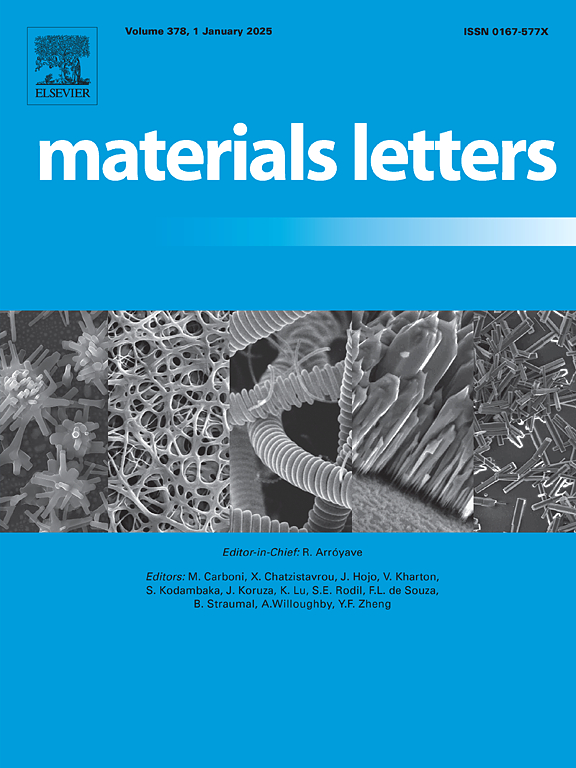基于离子液体改性LiFSI电解质锂离子电池实验数据集的机器学习模型的充电状态估计与预测
IF 2.7
4区 材料科学
Q3 MATERIALS SCIENCE, MULTIDISCIPLINARY
引用次数: 0
摘要
由于电池的非线性行为和环境波动,锂离子电池(lib)的荷电状态(SOC)的准确估计和预测仍然是一个关键问题。这项工作解释了机器学习(支持向量机,决策树,梯度增强)模型的发展,以估计和预测lib的准确SOC,其中实验数据来自具有LiFSI和吡啶基离子液体电解质的lib。为了获得最佳的模型性能,使用max_features_input、max_depth of models、max_split_data等来调优关键超参数。特征重要性揭示了放电容量是影响最大的特征,证实了模型的可靠性。优化后的决策树模型在实验数据的0.301193 s内获得了较低的SOC精度,均方根误差(RMSE) = 0.001298,均方误差(MSE) = 0.00000168, R2 = 0.999948。这些发现证明了机器学习方法在提高电池SOC评估以及电池寿命、安全性和容量方面的潜力。本文章由计算机程序翻译,如有差异,请以英文原文为准。
State-of-charge estimation and prediction by machine learning models using experimental dataset of lithium-ion batteries based on ionic liquid modified LiFSI electrolyte
Accurate state-of-charge (SOC) estimation and prediction in Lithium-ion battery (LIBs) remains a critical issue due to nonlinear battery behavior and environmental fluctuations. This work explains the development of Machine learning (Support vector machines, Decision tree, Gradient boosting) models to estimate and predict accurate SOC of LIBs wherein the experimental data was used from LIBs with LiFSI and pyridinium-based ionic liquid electrolytes. To achieve the optimal model performance, key hyperparameters were tuned using max_features_input, max_depth of models, max_split_data, etc. Feature importance revealed that discharge capacity was the most influential feature, confirming the model’s reliability. Optimized Decision tree model attained an exceptional SOC accuracy with low Root mean square error (RMSE) = 0.001298, Mean square error (MSE) = 0.00000168, and R2 = 0.999948 in 0.301193 s for experimental data. These findings demonstrate the potential of machine learning approach to enhance SOC estimation and the longevity, safety, and capacity of LIBs.
求助全文
通过发布文献求助,成功后即可免费获取论文全文。
去求助
来源期刊

Materials Letters
工程技术-材料科学:综合
CiteScore
5.60
自引率
3.30%
发文量
1948
审稿时长
50 days
期刊介绍:
Materials Letters has an open access mirror journal Materials Letters: X, sharing the same aims and scope, editorial team, submission system and rigorous peer review.
Materials Letters is dedicated to publishing novel, cutting edge reports of broad interest to the materials community. The journal provides a forum for materials scientists and engineers, physicists, and chemists to rapidly communicate on the most important topics in the field of materials.
Contributions include, but are not limited to, a variety of topics such as:
• Materials - Metals and alloys, amorphous solids, ceramics, composites, polymers, semiconductors
• Applications - Structural, opto-electronic, magnetic, medical, MEMS, sensors, smart
• Characterization - Analytical, microscopy, scanning probes, nanoscopic, optical, electrical, magnetic, acoustic, spectroscopic, diffraction
• Novel Materials - Micro and nanostructures (nanowires, nanotubes, nanoparticles), nanocomposites, thin films, superlattices, quantum dots.
• Processing - Crystal growth, thin film processing, sol-gel processing, mechanical processing, assembly, nanocrystalline processing.
• Properties - Mechanical, magnetic, optical, electrical, ferroelectric, thermal, interfacial, transport, thermodynamic
• Synthesis - Quenching, solid state, solidification, solution synthesis, vapor deposition, high pressure, explosive
 求助内容:
求助内容: 应助结果提醒方式:
应助结果提醒方式:


